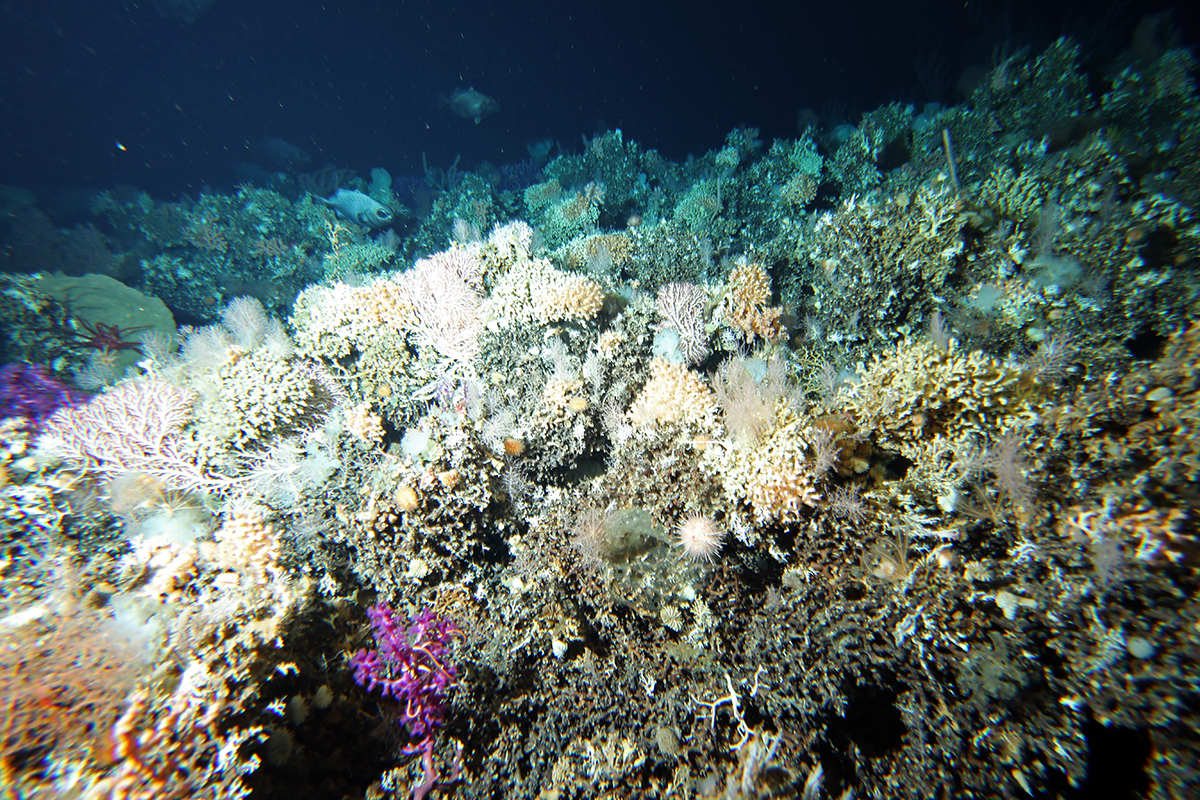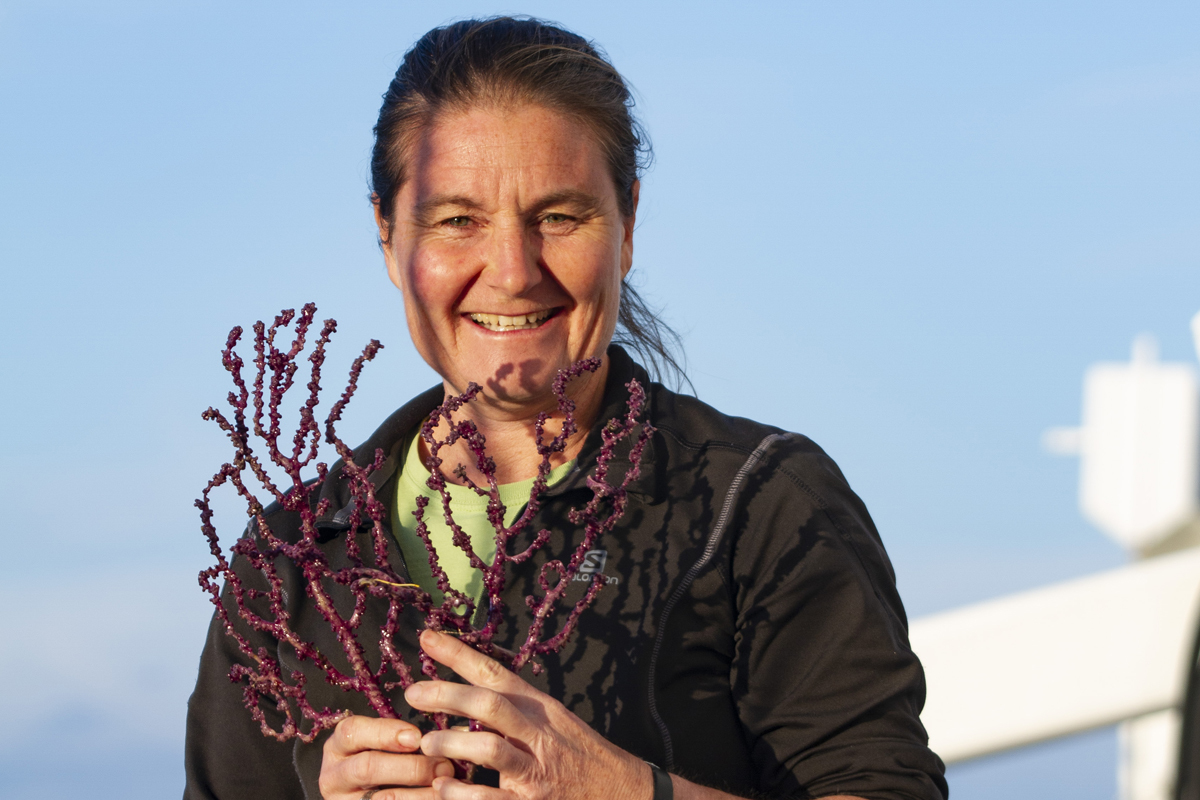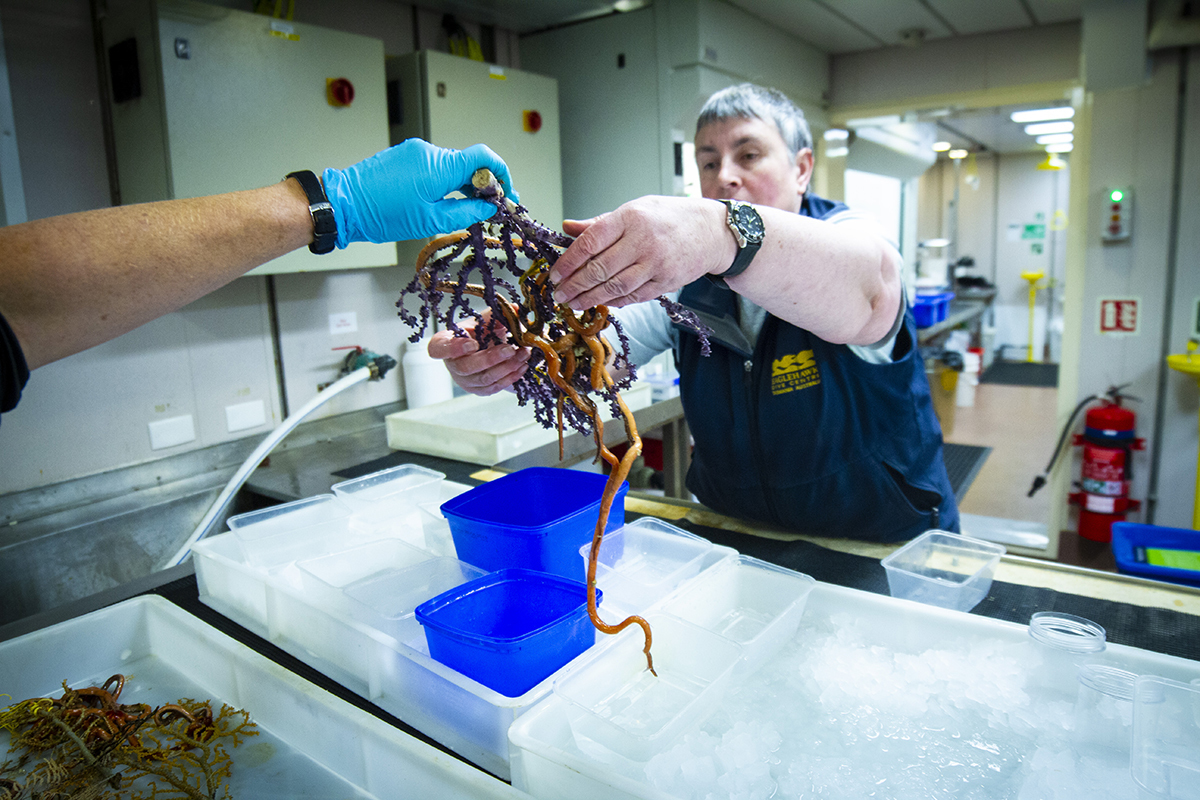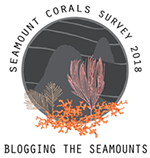December 19, 2018

Day 27: Kirrily Moore, Tasmanian Museum and Art Gallery
Have you wondered why we humans feel the need to catalogue and curate the diversity we see around us? And how do we catalogue and curate that diversity? I’m on the ship as part of the biological crew which swings into action when actual critters are hauled up from the deep. We take the decision to collect very seriously and so we must extract as much information as we can about the few animals we get.
To be able to generate robust and reliable data on the distribution of the critters we are seeing in the towed video and sometimes getting in the trawls we need consistency between two sorters, between two shifts, between two voyages, between two countries, between two oceans. The only way to get that consistency is to assign a name to an identifiable ‘thing’. The ideal situation is when we have a known species which is easily recognised on the towed video and has a Latin binomial name which is not in dispute. A good example is the fish, orange roughy. We see them on the camera and they are called Hoplostethus atlanticus by all researchers everywhere.
But for the majority of the 'non-fish' animals (such as corals, sponges, molluscs, seastars, brittle stars, crustaceans) we might see on the towed video, we cannot be sure which actual 'taxon' we are looking at (they are small and often have features which require examination under a microscope) and even if we have the good fortune to collect it, it quite easily might be a species which has not yet been formally described thus does not have a Latin name recognised world-wide. So we often use something affectionately called OTUs or Operational Taxonomic Units. That means we don’t know what it is but it’s different from that other one over there. And sometimes the name has to be a vague as 'Sponge species 1'. However, as long as we keep photos, collection information and most importantly specimens catalogued in museums all labelled the same, we can be as consistent as possible where 'Sponge sp.1' has been seen or collected and eventually a specialist taxonomist may be able to identify it and assign it a Latin name.

Previous voyages to these seamounts recorded a beautiful and easily spotted deep purple soft coral in the video tows and an almost perfect specimen was collected by an ROV in 2008. It was not easily assigned to a known species of coral and was given a temporary 'OTU' name. I was lucky enough to be given this specimen (and others) to study as part of my PhD and I lodged it at the Tasmanian Museum and Art Gallery (TMAG) where I work, so it will be kept in perpetuity for future reference.
My PhD involved investigating world-wide to see if there were similar corals already described and whether this one was the same or different. Using both molecular and morphological results I decided it was an undescribed species. So I formally described it and gave it the name Victorgorgia eminens which is the Latin stem for eminent or prominent, in recognition of the fact that the large, purple specimens are very obvious and distinct in photographs and video footage. We are now seeing these specimens in towed video on the current voyage and I can jump up and point at the screen yelling 'there’s one'. And now it has a name.

- Log in to post comments

